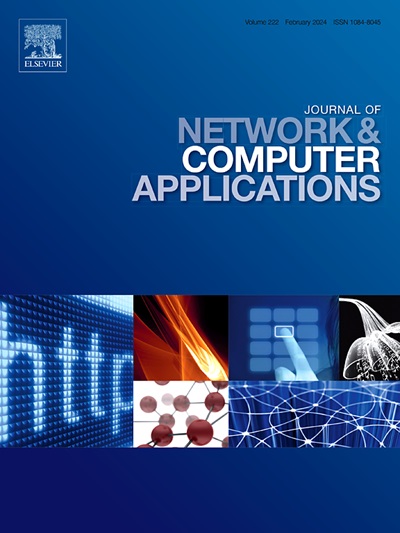使用P4-perfSONAR增强科学DMZ的可见性
IF 8
2区 计算机科学
Q1 COMPUTER SCIENCE, HARDWARE & ARCHITECTURE
引用次数: 0
摘要
科学非军事区(Science DMZ)是一个专门的网络,旨在促进大规模科学数据的传输。Science DMZ的关键元素之一是perfSONAR,它是一种主动性能测量设备,用于监视多个域中的端到端路径。perfSONAR虽然用途广泛,但也面临着一些限制,比如事件可见性受限和粗粒度测量。本文提出了一种将P4可编程数据平面(PDP)交换机与perfSONAR集成的方案。P4 PDP交换机被动安装并运行在实时流量副本上,提供了收集细粒度自定义测量数据和报告数据平面事件的灵活性。这种集成使perfSONAR能够收集实际流量的每流粒度统计数据,识别更广泛的网络问题,并在减少主动测试开销的同时增强可见性。此外,该方案使用自适应线性预测(LP)模型,动态调整从P4 PDP交换机发送到perfSONAR的报告速率,最大限度地减少了后者所需的存储和处理。实验结果表明,该系统在保持较小且可配置的相对平均误差(RME)的同时,将报告数量减少了五倍。本文章由计算机程序翻译,如有差异,请以英文原文为准。
Enhancing visibility on a science DMZ with P4-perfSONAR
The Science Demilitarized Zone (Science DMZ) is a specialized network designed to facilitate the transfer of large-scale scientific data. One of the key elements of the Science DMZ is perfSONAR, an active performance measurement device that monitors end-to-end paths over multiple domains. Although versatile, perfSONAR faces limitations such as restricted visibility of events and coarse-grained measurements. This paper proposes a scheme that integrates P4 programmable data plane (PDP) switches with perfSONAR. P4 PDP switches are passively installed and operate on real-time traffic copies, providing flexibility to collect fine-grained custom measurements and report events in the data plane. This integration enables perfSONAR to collect per-flow granular statistics of actual traffic, identify a broader range of networking issues, and enhance visibility while reducing the overhead of active tests. Additionally, the scheme uses an adaptive linear prediction (LP) model that dynamically adjusts the rate of reports sent from the P4 PDP switch to perfSONAR, minimizing the storage and processing needed for the latter. Experimental results show that the system reduces the number of reports by a factor of five while maintaining a small and configurable relative mean error (RME).
求助全文
通过发布文献求助,成功后即可免费获取论文全文。
去求助
来源期刊

Journal of Network and Computer Applications
工程技术-计算机:跨学科应用
CiteScore
21.50
自引率
3.40%
发文量
142
审稿时长
37 days
期刊介绍:
The Journal of Network and Computer Applications welcomes research contributions, surveys, and notes in all areas relating to computer networks and applications thereof. Sample topics include new design techniques, interesting or novel applications, components or standards; computer networks with tools such as WWW; emerging standards for internet protocols; Wireless networks; Mobile Computing; emerging computing models such as cloud computing, grid computing; applications of networked systems for remote collaboration and telemedicine, etc. The journal is abstracted and indexed in Scopus, Engineering Index, Web of Science, Science Citation Index Expanded and INSPEC.
 求助内容:
求助内容: 应助结果提醒方式:
应助结果提醒方式:


